Hands-On Learning: How to Represent Subtraction of Fractions with Unlike Denominators Using Everyday Objects
Subtracting fractions with different denominators can sometimes be a tricky concept to grasp. However, by using tangible objects from our daily lives, we can visualize and better understand the process.
[include_netrun_products_block from-products="product/6-south-carolina-sc-ready-grade-3-math-practice-tests/" product-list-class="bundle-products float-left" product-item-class="float-left" product-item-image-container-class="p-0 float-left" product-item-image-container-size="col-2" product-item-image-container-custom-style="" product-item-container-size="" product-item-add-to-cart-class="btn-accent btn-purchase-ajax" product-item-button-custom-url="{url}/?ajax-add-to-cart={id}" product-item-button-custom-url-if-not-salable="{productUrl} product-item-container-class="" product-item-element-order="image,title,purchase,price" product-item-title-size="" product-item-title-wrapper-size="col-10" product-item-title-tag="h3" product-item-title-class="mt-0" product-item-title-wrapper-class="float-left pr-0" product-item-price-size="" product-item-purchase-size="" product-item-purchase-wrapper-size="" product-item-price-wrapper-class="pr-0 float-left" product-item-price-wrapper-size="col-10" product-item-read-more-text="" product-item-add-to-cart-text="" product-item-add-to-cart-custom-attribute="title='Purchase this book with single click'" product-item-thumbnail-size="290-380" show-details="false" show-excerpt="false" paginate="false" lazy-load="true"]
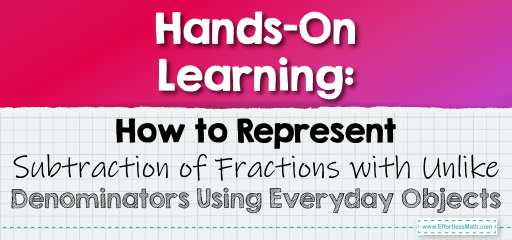
This blog post will guide you through representing the subtraction of fractions with unlike denominators using common objects.
Step-by-step Guide:
1. Grasping the Basics:
To subtract fractions, it’s essential to have a common denominator. This ensures that we’re taking away parts of the same size.
2. Selecting Suitable Objects:
Pick objects that can be easily segmented, such as pieces of fruit, toy blocks, or sections of a chocolate bar. Ensure you have enough to represent the denominators of the fractions you’re addressing.
3. Segmenting the Objects:
Divide your objects based on the denominators of the fractions. For instance, if working with \(\frac{3}{5}\) and \(\frac{1}{10}\), split an apple into 5 equal parts and a chocolate bar into 10 equal sections.
4. Identifying a Common Denominator with Objects:
The fractions need the same denominator for subtraction. Using the objects, determine a size that both sets can be adjusted to. In our example, 10 is the common denominator since both 5 and 10 can be adjusted to it.
5. Representing the Fractions:
Use the objects to depict each fraction. For \(\frac{3}{5}\), take three parts out of the five. For \(\frac{1}{10}\), take one part out of the ten.
6. Subtracting Using Objects:
Remove the parts of the second fraction from the first. Count the remaining parts and represent them over the common denominator. In our example, you’ll have 2 parts left out of 10, symbolizing \(\frac{2}{10}\), which can be simplified to \(\frac{1}{5}\).
Example 1:
Subtract \(\frac{1}{6}\) from \(\frac{4}{12}\) using toy blocks.
Solution:
With a set of blocks divided into 6 and another into 12, the common denominator is 12. Representing the fractions, you’ll have 2 blocks for \(\frac{1}{6}\) and 4 blocks for \(\frac{4}{12}\). After subtraction, you’re left with 2 blocks out of 12, or \(\frac{2}{12}\), which simplifies to \(\frac{1}{6}\).
The Absolute Best Book for 5th Grade Students
Example 2:
Subtract \(\frac{2}{8}\) from \(\frac{3}{4}\) using pieces of fruit.
Solution:
If you divide a fruit into 8 parts and another into 4 parts, the common denominator is 8. Representing the fractions, you’ll have 6 parts for \(\frac{3}{4}\) and 2 parts for \(\frac{2}{8}\). After subtraction, you have 4 parts out of 8, or \(\frac{4}{8}\), which simplifies to \(\frac{1}{2}\).
Practice Questions:
1. Subtract \(\frac{2}{7}\) from \(\frac{3}{14}\) using chocolate bars.
2. Subtract \(\frac{1}{9}\) from \(\frac{2}{3}\) using toy blocks.
3. Subtract \(\frac{3}{10}\) from \(\frac{1}{5}\) using pieces of fruit.
A Perfect Book for Grade 5 Math Word Problems!
Answers:
1. \(\frac{-1}{14}\)
2. \(\frac{4}{9}\)
3. \(\frac{-1}{10}\)
The Best Math Books for Elementary Students
Related to This Article
More math articles
- 3rd Grade AZMerit Math Worksheets: FREE & Printable
- How to Prepare for the THEA Math Test?
- TASC Math Test-Taking Strategies
- Cofunction Identities
- Deciphering the Dots: How to Recognizing and Understanding Graph Patterns
- How Is the HiSET Test Scored?
- How to Simplify Polynomials? (+FREE Worksheet!)
- Top 10 5th Grade FSA Math Practice Questions
- 6th Grade MAP Math FREE Sample Practice Questions
- Using Distributive Property to Factor Numerical Expressions
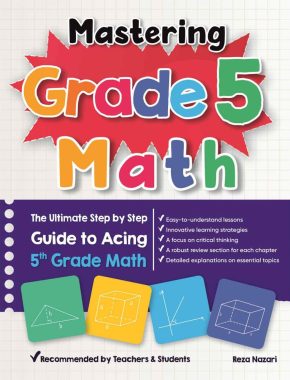
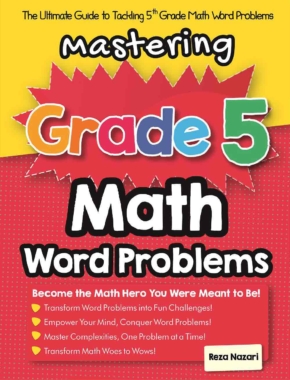
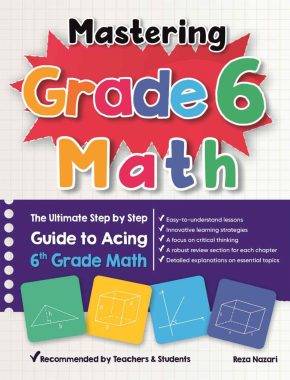

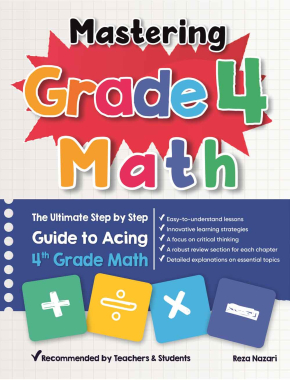




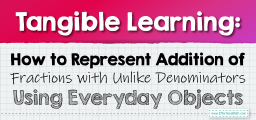
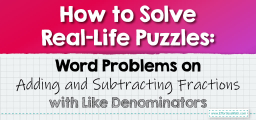

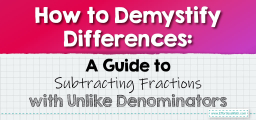
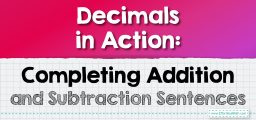
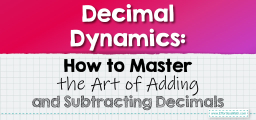
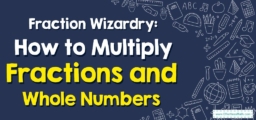
What people say about "Hands-On Learning: How to Represent Subtraction of Fractions with Unlike Denominators Using Everyday Objects - Effortless Math: We Help Students Learn to LOVE Mathematics"?
No one replied yet.